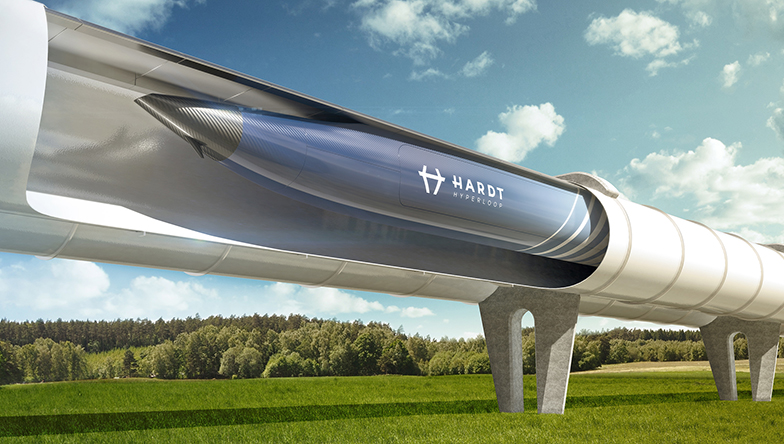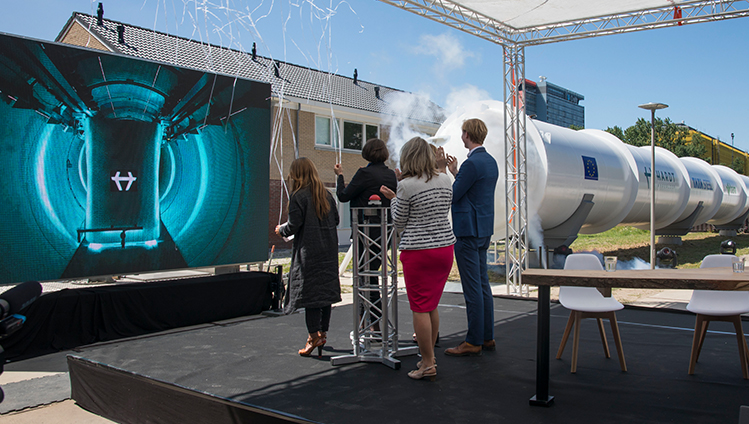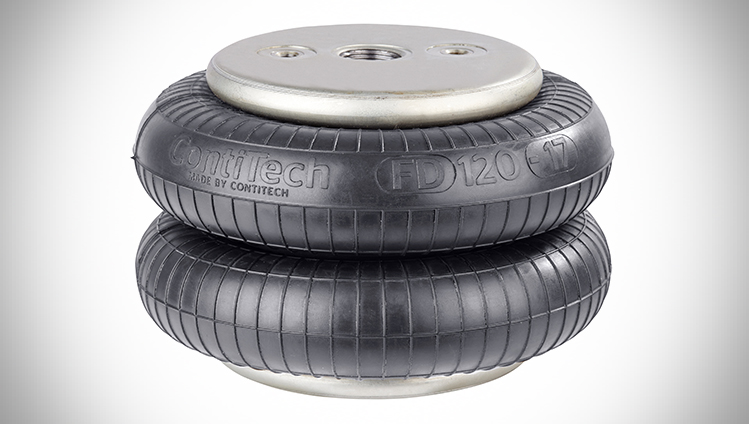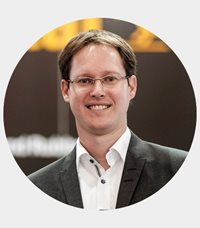
Waking up in Stockholm in the morning and going to bed the same evening in Madrid, some 3,000 kilometers away: in the age of globalization, this has long since been commonplace. Many jobs today involve fast travel. Similarly, overnight parcel deliveries are now taken for granted rather than being regarded as a good service. Accordingly, the means of transport chosen to traverse these long distances, whether for people or merchandise, need to be well chosen. In 2013, Elon Musk popularized the vision of the hyperloop, a magnetic levitation track that transports people and goods through tubes at a speed of 1,200 km/h. A transport system that is as sustainable as it is efficient. And it is precisely this vision that is now within reach.
Putting the system through its paces

The success story comes from our Dutch cooperation partner Hardt: the first reliable Hyperloop test track in Europe has been completed. The 30-meter long track has been installed in Delft, Hardt's home city. Soon capsules will be able to bullet through the tubes on a trial basis and, thanks to newly developed lane changing technology, will be able to change direction without losing speed. Although it is initially a test track, if the hyperloop ever becomes a viable public transport option, the Stockholm-Madrid route would be traversed in less than three hours. For comparison, an aircraft takes around four hours, and consumes far more energy.

We too have contributed to Hardt’s development of this future mode of transport. “To provide the capsule’s sophisticated capsule running gear with secure bearings, ten of our air springs are suspended directly with the capsule,” explains Manuel Mosich, an expert in industrial air springs. His colleague and innovation manager Christoph Zander adds: "The project is very exciting, especially regarding the sustainability of this mode of transport. That's why we supported Hardt right from the start.“
Europe is becoming a village
This makes it all the more gratifying that Hardt's work over the past two years has now reached an important milestone in the shape of the test track. And the company is also energetically forging ahead with its plans for the future. Over the next two years, a European Hyperloop Center is set to be built, housing a research and development facility, an exhibition center, an adventure center and a three-kilometer test track. It will coordinate all European activities in the field of hyperloop technology. For example, partner companies will have the opportunity to test their high-speed conveyances on location. The ultimate aim here is to standardize European hyperloop infrastructure.
 |
Christoph Zander is pushing ahead with our air spring innovations and has helped to support the cooperation with Hardt:
„We are pleased with the current milestones toward express travel and are proud that our products are part of such an innovative area.“
|
Should this become a functioning transport network connecting cities and people throughout Europe on non-stop routes, physical distances would play less of a role. Travel would become more climate-friendly and cost-effective. Thanks to shorter travel times, the continent would come to feel more like a village. Hardt is currently assessing suitable locations for the planned center. And who knows, maybe one day soon that will mean Stockholm in the morning and Madrid in the evening for you too.